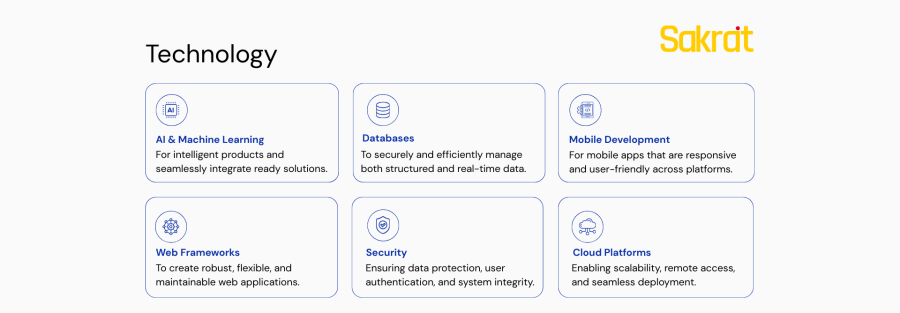The Future of Cybersecurity: Preparing for AI-Powered Threats
For years, cybersecurity has been a high-stakes game of cat and mouse. But with the explosion of generative AI, the game has fundamentally changed. The very tools promising to revolutionize business productivity are now being weaponized by adversaries to create a new generation of sophisticated, scalable, and relentlessly evasive cyber threats.
The numbers are alarming. Microsoft now tracks over 1,500 distinct threat actors, a fivefold increase in just one year, and password attacks have surged to a staggering 7,000 per second. In this new landscape, a staggering 97% of cybersecurity professionals fear their organization will be hit by an AI-driven attack, with 93% bracing for such attacks to occur daily.
The future of cybersecurity is no longer just about building higher walls; it’s about fighting AI with AI. For business leaders, understanding this new battlefield isn’t just a technical requirement—it’s a critical component of survival.
The Dark Side of AI: A New Breed of Threats
Attackers are leveraging AI to enhance every stage of the attack lifecycle, making their efforts more personalized and harder to detect.
- Hyper-Personalized Social Engineering: AI can now generate millions of unique, context-aware phishing emails that perfectly mimic the writing style of a trusted colleague or a legitimate organization. The next evolution is real-time voice synthesis during live phone calls, enabling attackers to impersonate executives with terrifying accuracy to authorize fraudulent transactions.
- AI-Crafted Mutating Malware: Malicious actors are using AI to create “polymorphic” malware that can alter its own code with each new infection. This allows it to constantly change its signature, rendering traditional, signature-based antivirus software almost useless.
- Automated Reconnaissance and Exploitation: AI systems can scan for network vulnerabilities, identify weaknesses, and even write custom exploit code at machine speed. This dramatically shortens the time from vulnerability discovery to a full-blown attack, reducing the response window for security teams from days to mere minutes.
Fighting Fire with Fire: The Rise of Defensive AI
While the threat is daunting, AI is also the most powerful weapon defenders have in their arsenal. The future of defence is proactive, predictive, and automated.
- AI for Advanced Threat Detection: AI-powered security systems can analyze trillions of signals across a network in real time—a scale impossible for human analysts. By learning the normal patterns of behaviour for users and devices, these systems can instantly spot anomalies that signal a potential breach, from an employee logging in at an unusual time to a device making an unauthorized connection.
- Automated and Predictive Response: When a threat is detected, speed is paramount. Modern AI doesn’t just send an alert; it takes immediate action. This can involve automatically isolating an infected device from the network, blocking malicious traffic, or revoking compromised credentials, all without waiting for human intervention. The most advanced systems use predictive analytics to identify potential attack paths and patch vulnerabilities before they can be exploited.
- Agentic AI: The Autonomous Security Analyst: The next frontier is agentic AI, where autonomous AI agents act as tireless digital security analysts. Microsoft’s Security Copilot is an early example, where AI agents can investigate threats, correlate data from different sources, and provide human analysts with a complete incident report in minutes—a process that once took hours.
2026 and Beyond: An Action Plan for Leaders
Preparing for this future requires a strategic shift from a reactive security posture to a resilient, proactive one.
- Adopt a Zero-Trust Architecture: The old “castle-and-moat” model of network security is obsolete. A Zero-Trust framework operates on the principle of “never trust, always verify,” meaning no user or device is trusted by default, regardless of whether they are inside or outside the network. This drastically limits an attacker’s ability to move laterally if they do breach the perimeter.
- Invest in AI-Driven Security Platforms: You cannot fight an AI-powered threat with manual tools. Upgrading to a modern, AI-driven security platform is essential for threat detection, response, and predictive analytics. Over 64% of organizations are already using AI for threat detection because of its unmatched speed and precision.
- Empower the Human-in-the-Loop: Technology is a powerful ally, but it is not a silver bullet. The future is a collaboration between human expertise and machine efficiency. Invest in continuous training to help your employees spot sophisticated, AI-generated phishing attempts. Your security team must also be upskilled to manage, interpret, and oversee these complex AI systems.
The battle of 2026 will be waged between competing AIs. Victory will belong to those who not only adopt the most advanced defensive technologies but also build a security-conscious culture that empowers people to work alongside their intelligent digital guardians.


